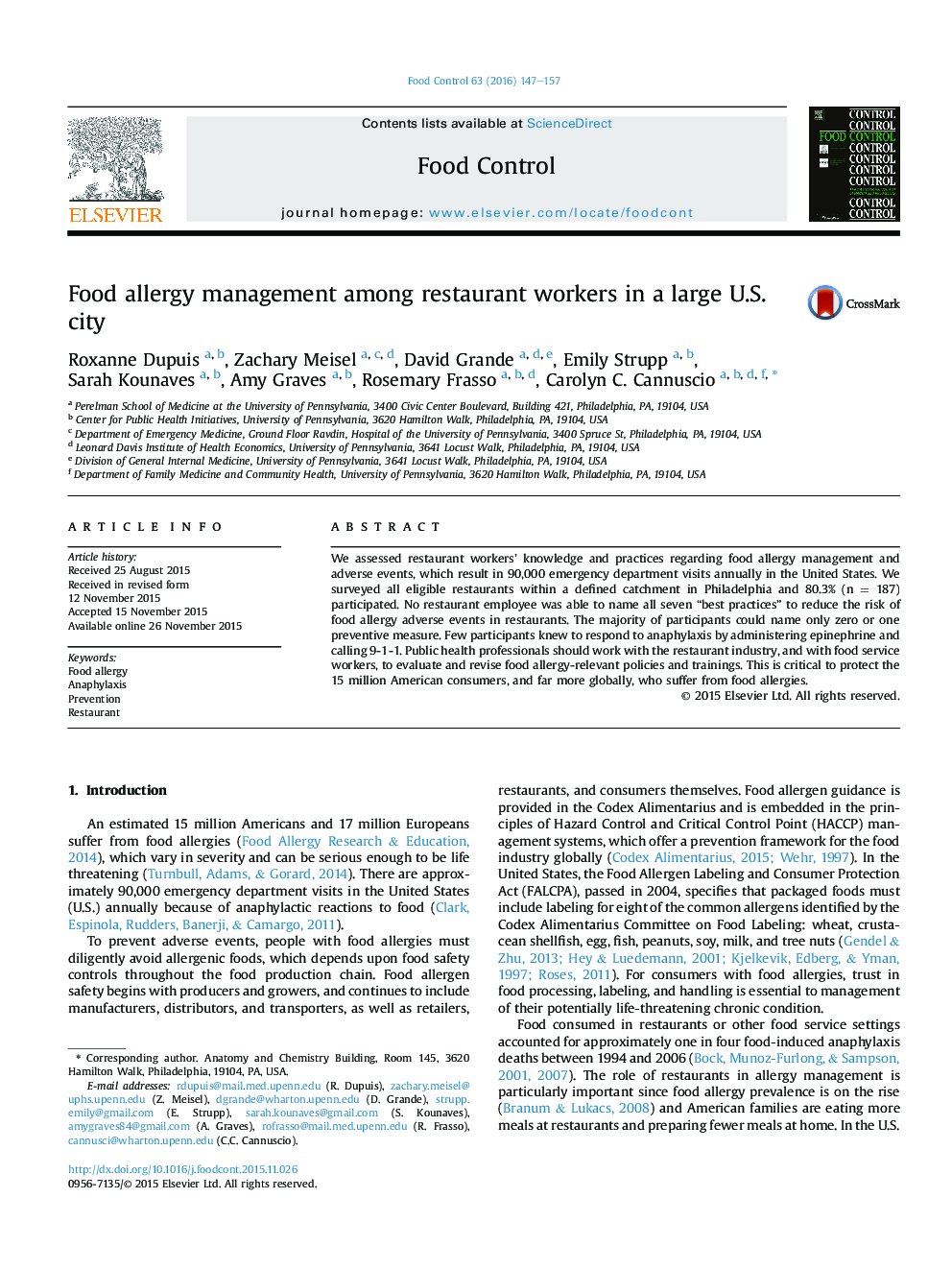| Article ID | Journal | Published Year | Pages | File Type |
|---|---|---|---|---|
| 4559146 | Food Control | 2016 | 11 Pages |
•We surveyed quick-service urban restaurants, with an 80% response (n = 233).•We measured adherence to 7 best practices to reduce food allergy adverse events.•Despite high motivation, no restaurant employee used all 7 best practices.•Few respondents knew how to assist a customer experiencing anaphylaxis.•Improved food allergen training is warranted, as is review of existing policies.
We assessed restaurant workers' knowledge and practices regarding food allergy management and adverse events, which result in 90,000 emergency department visits annually in the United States. We surveyed all eligible restaurants within a defined catchment in Philadelphia and 80.3% (n = 187) participated. No restaurant employee was able to name all seven “best practices” to reduce the risk of food allergy adverse events in restaurants. The majority of participants could name only zero or one preventive measure. Few participants knew to respond to anaphylaxis by administering epinephrine and calling 9-1-1. Public health professionals should work with the restaurant industry, and with food service workers, to evaluate and revise food allergy-relevant policies and trainings. This is critical to protect the 15 million American consumers, and far more globally, who suffer from food allergies.
